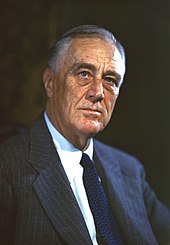This day in history: The Twenty-second Amendment to the United States Constitution was ratified on this day in 1951, limiting Presidents to two terms. The Twenty-second Amendment was a reaction to Franklin D. Roosevelt's election to an unprecedented four terms as president, but presidential term limits had long been debated in American politics. Delegates to the Constitutional Convention of 1787 considered the issue extensively (alongside broader questions, such as who would elect the president, and the president's role). Many, including Alexander Hamilton and James Madison, supported lifetime tenure for presidents, while others favored fixed terms. Virginia's George Mason denounced the life-tenure proposal as tantamount to elective monarchy. An early draft of the U.S. Constitution provided that the president was restricted to one seven-year term. Ultimately, the Framers approved four-year terms with no restriction on how many times a person could be elected president.
Early presidents, like Washington, resigned after 2 terms. Numerous academics and public figures have looked at his decision to retire after two terms, and have, according to political scientist Bruce Peabody, "argued he had established a two-term tradition that served as a vital check against any one person, or the presidency as a whole, accumulating too much power".
"It was Benjamin Franklin who summed up the best case for term limits more than two centuries ago: 'In free governments, the rulers are the servants, and the people their superiors . . . . For the former to return among the latter does not degrade, but promote them.' In other words, when politicians know they must return to ordinary society and live under the laws passed while they were in government, at least some of them will think more carefully about the long-term effects of the programs they support. Their end-all will not be re-election, because that option will not be available." Source



No comments:
Post a Comment